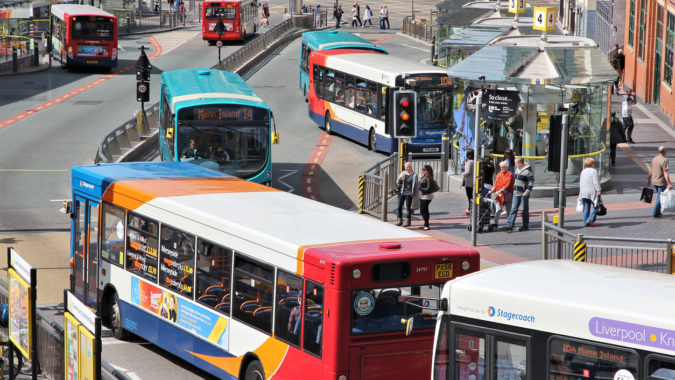An opinion piece by Monica Laucas, drawing on conversation with Chelsea Stefanska, Global Health Security Specialist at Mott MacDonald
I recently discussed with Chelsea Stefanska, a Global Health Security Specialist at Mott MacDonald, how epidemiology can influence infrastructure design and how infrastructure can be retrofitted to be pandemic resilient.
“As an infectious disease epidemiologist, it is an unconscious habit to observe disease transmission routes in everyday settings. I have always noticed when people rub their eyes with the same hand that is holding a handrail on the Tube, or cough in a restaurant without covering their mouths” said Stefanska. “The most common frustration is that many public toilets are seemingly designed for contamination – it is often very difficult to exit the room with clean hands! But since the start of the COVID-19 pandemic, the often-overlooked issue of infection prevention and control has been thrust into the spotlight.”
For global health specialists, the COVID-19 pandemic was sadly not a surprise, but rather part of a trend over recent decades of an increasing frequency of epidemic events. SARS, avian influenza, MERS, Ebola, and Zika are only the tip of the iceberg, with thousands of smaller outbreaks happening each year (such as cholera or measles)[1]. The risk of emerging infectious disease threats has been increasing with urbanisation, globalisation and climate change. Most of the pathogens we face originate in animals and jump to humans (known as zoonoses), and as humans encroach on wildlife habitats and deforestation and climate change push animals closer to humans, there are more chances for viruses, bacteria or parasites to jump between species[2].
What does this have to do with infrastructure? The COVID-19 pandemic has made it abundantly clear that infrastructure and infectious diseases are intrinsically linked: that infrastructure can support the spread of diseases, but also that infrastructure can be impacted by infectious diseases. As lockdown restrictions began, infrastructure owners and operators from airports to metro systems and sports stadia to office buildings were faced with an unprecedented situation. Very few had an operations plan for a pandemic scenario, and questions from “what measures are effective to protect our staff and users?” to “how do we remain economically viable in a lockdown?” sprang up in a panic.
This was further complicated by the fact that the virus which causes COVID-19 was a new pathogen, so there was limited evidence on which control measures were effective. For months even its transmission routes were not fully understood, complicating the messages coming from governments and leading to confusion and frustration as guidance changed. For people and businesses, it was difficult to keep up with all the new information, and even more difficult to convert it into practical measures.
Thus, ‘infrastructure epidemiology’ was born, which Chelsea practises within her team at Mott MacDonald. Their work provides a collaborative and multi-disciplinary approach focused on infection control and pandemic resilience in infrastructure settings. The discipline explores ways in which infrastructure can be repurposed or retrofitted to be resilient to infectious disease threats and reassure users, but also it involves helping infrastructure operators remain economically viable while operating at reduced capacity.
During the beginning of the pandemic, the team’s focus was on practical and evidence-based interventions and operational improvements to reduce transmission. Given the volume of new products on the market and the fast-evolving evidence (often not well communicated), it was particularly important to have advisors with relevant experience interpreting scientific data.
As the evidence has grown over the past year, the understanding of risk reduction in infrastructure settings has also evolved. For example, in addition to measures to reduce crowding, such as tailoring service schedules on public transport or redesigning queuing systems, we now know the importance of ventilation in enclosed spaces to prevent airborne viral transmission.
However, is important to note that not all infectious disease threats are respiratory. While COVID-19 is the current priority, the work of teams like Chelsea’s points to a future where infrastructure is designed or retrofitted to mitigate against diseases spread by other routes which may become more relevant in the future. New features to consider include improvements to the layout of toilets at stations to optimise hand hygiene, the installation of mesh screens on windows or increased ventilation to avoid mosquitoes intrusion, and reduction of contaminated surfaces by replacing touchpoints with touchless solutions or easy-clean materials.
We must improve resilience and preparedness for future infectious disease threats, as well as new variants of the virus that causes COVID-19; we need proactive measures (including improved risk assessment and contingency planning) rather than solely reacting in times of crisis. In Chelsea’s recent experience, specifications for new infrastructure projects are already beginning to include requirements to consider infectious diseases at the design stage, and, in time, I hope we will see that industry standards for disease threats will become commonplace alongside other threats such as fire, flooding and climate change.
The interconnectedness of today’s world means that emerging outbreaks on other continents can have far-reaching impacts within a short time. Within their remit, infrastructure settings can become safer and more resilient spaces. By reducing infection risk to users and staff, pandemic-resilient infrastructure can continue to provide employment, improve mental wellbeing by enabling continuity of some services, and contribute to a more stable economy, thereby improving social outcomes for all.
Opinion piece by Monica Laucas, YPP member. Views expressed reflect those of the author, rather than the Commission.
[1] Smith, Katherine F et al. “Global rise in human infectious disease outbreaks.” Journal of the Royal Society, Interface vol. 11,101 (2014): 20140950. doi:10.1098/rsif.2014.0950
[2] Gavi, The Vaccine Alliance. “5 reasons why pandemics like COVID-19 are becoming more likely”, June 2020



